Thanks to its known bacteriostatic and anti-exudative properties it is widely used in the dermatological field in the adjunctive treatment of skin diseases of bacterial origin and susceptible to secondary infection.
The innovative solution
in the use of
antimicrobial dyes
2% fluorescein
based skin solution
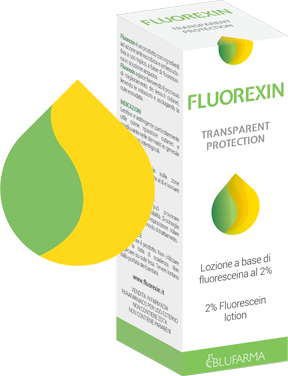
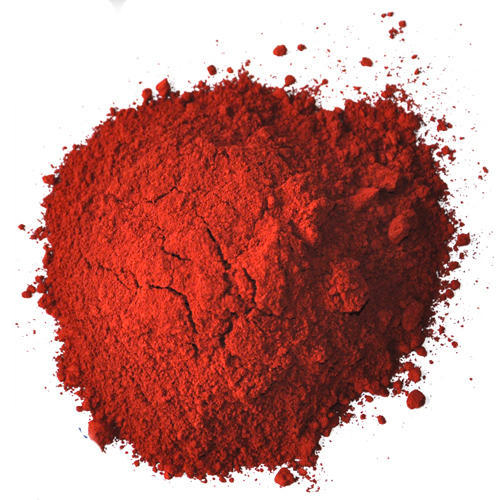
Old active ingredient
EOSINE
The use of this dye
has the following
DISADVANTAGES

CHROMATIC COVERAGE
OF PATHOLOGIES
DELLE PATOLOGIE

POOR PATIENT
COMPLIANCE
DEL PAZIENTE

SOLUTION
NUOVO PRINCIPIO ATTIVO
FLUORESCEINA
NON-BROMATE
PRECURSOR
OF EOSINE

SAME THERAPEUTIC
ADVANTAGES
DOES NOT COVER
INJURY
The new formulation of FLUOREXIN is widely used as a natural (non-drug) adjuvant in all skin conditions characterized by exudation, maceration with possible microbial (bacterial or fungal) overlap in association with other specific therapies (topical or systemic).

Naturally promotes the regeneration process of skin tissues.
Creates a bacteriostatic barrier by preventing overinfection.
Soothes irritation and reduces skin exudation.
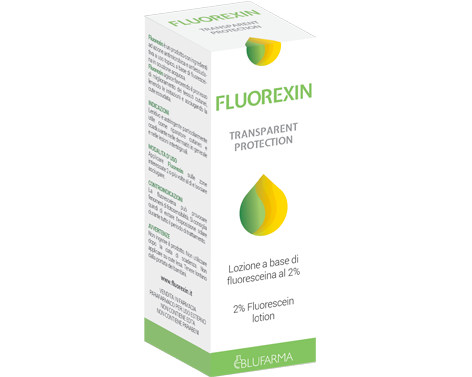
PATHOLOGIES
Antibacterial, moisturizing, astringent, soothing,
immunomodulatory.

The purpose of the exudate is to circumscribe the morbid process, preventing the spread of pathogens (thanks to the fibrin network), dilute any toxic substances, neutralize the hyperacidity of the inflamed tissue and promote the activity of leukocytes and the formation of fibrin. Exudate also facilitates the transport of antigens to local lymph nodes, via lymphatic drainage, for the specific immune response.
Exudate can be:
Serous: It is generally typical of milder inflammatory processes and is low in protein; its consistency is similar to that of serum and may occasionally be found in certain diseases, such as tuberculosis.
Suppurative or purulent (pus): this yellowish exudate of creamy consistency is typical of infected wounds and consists mainly of bacteria and disintegrating white blood cells.
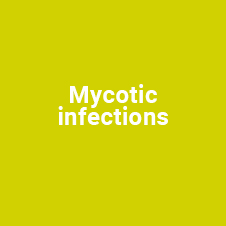
Several factors favor the appearance of mycosis in humans, including: the use of antibiotics, reduced efficiency of the immune system and the presence of a diabetic state.
Depending on the site of infection, mycoses are divided into: superficial mycoses and cutaneous mycoses.
Superficial mycoses affect the outermost layers of the skin and hair/hair. (Piedra nera, Piedra bianca, Pitiriasi versicolor, Tinea nigra)
Cutaneous mycoses affect the keratinized layers of the epidermis and skin adnexa, such as the hair/hairs and nails. Unlike superficial mycoses, cutaneous mycoses evoke an immune response and involve degradation of the epidermal keratin layers, inducing irritation, inflammation or, in some cases, even allergic-type reactions. Medical pathologists also call skin fungus by the generic term "ringworm." The fungi that cause skin mycoses are better known as dermatophytes or dermatomycetes. Dermatophytes have the distinctions of being filamentous fungi and reproducing by spores. In nature, there are three genera of dermatophytes: the genus Microsporum, the genus Trichophyton and the genus Epidermophyton.

Skin ulcers can occur as a result of physical trauma, with or without vascular damage, which triggers tissue loss. Other causes include infection, venous stasis, vasculitis, neoplasia, neurological problems, and autoimmune diseases with vascular involvement.
Decubitus or pressure ulcers, common in patients who are bedridden for a long period, are caused by lack of adequate blood flow. In addition, there are diabetic ulcers, which have a neuropathic origin. They usually affect the lower limbs and are determined by an alteration in blood flow that results in tissue damage.

Hydrosadenitis suppurativa acts in a localized manner; to be precise, it has a preference for the armpits, the region just below the breast, the groin, the genital area, the area in the middle of the buttocks and, finally, the perianal region.
From hydrosadenitis suppurativa it is not possible to cure; however, there are several treatments available, both pharmacological and surgical, which allow to control the symptoms and improve, in an egregious way, the standard of living of patients.

Tinea pedis is caused by an infection sustained by dermatophyte mycetes, which affect the glabrous skin, especially that of the feet; the disease mainly affects adult males, especially when their immune system is weakened or compromised.
The clinical-symptomatic picture of tinea pedis is characterized by: reddened skin, desquamation of the skin, hyperkeratosis, thickening of the nails, smelly feet, itching, fluid-filled blisters on the sole of the foot, cracking of the skin.
Complications: bacterial superinfections

Human beings are constantly exposed to mycetes. Most people tolerate this exposure without consequences: immunocompetent subjects, i.e. with a normally functioning immune system, have a high level of innate resistance to colonization by fungi.
These fungi become pathogenic when the host is in a debilitated condition.
Candida normally lives as a commensal in a great many districts of the human body in the form of yeast. If it is not pathogenic, Candida is always in the form of yeast. When it becomes pathogenic, it emits extroversions from its membrane and becomes an hypha; in this state, it has the ability to "hang on" to underlying tissues and become an opportunist, that is, it takes advantage of a situation of immunodepression to proliferate in an exaggerated manner and cause candidiasis (or candidiasis) disease.
When Candida causes candidiasis it is to all intents and purposes also a parasite, that is an organism that lives on or inside a host and from which it takes benefits without giving any useful contribution in return, or even causing damage to the host.
Candidiasis is the most frequent human mycosis and is one of the most important problems of the immunocompromised subject, that is with an inefficient immune system.
If the human being is healthy, the colonies of Candida present in the mucous membranes and on the skin are harmless, as the so-called good bacteria of the microflora and the immune system prevent their pathological proliferation.
However, the moment these two control systems fail, Candida begins to multiply intensely, triggering the condition known as candidiasis.
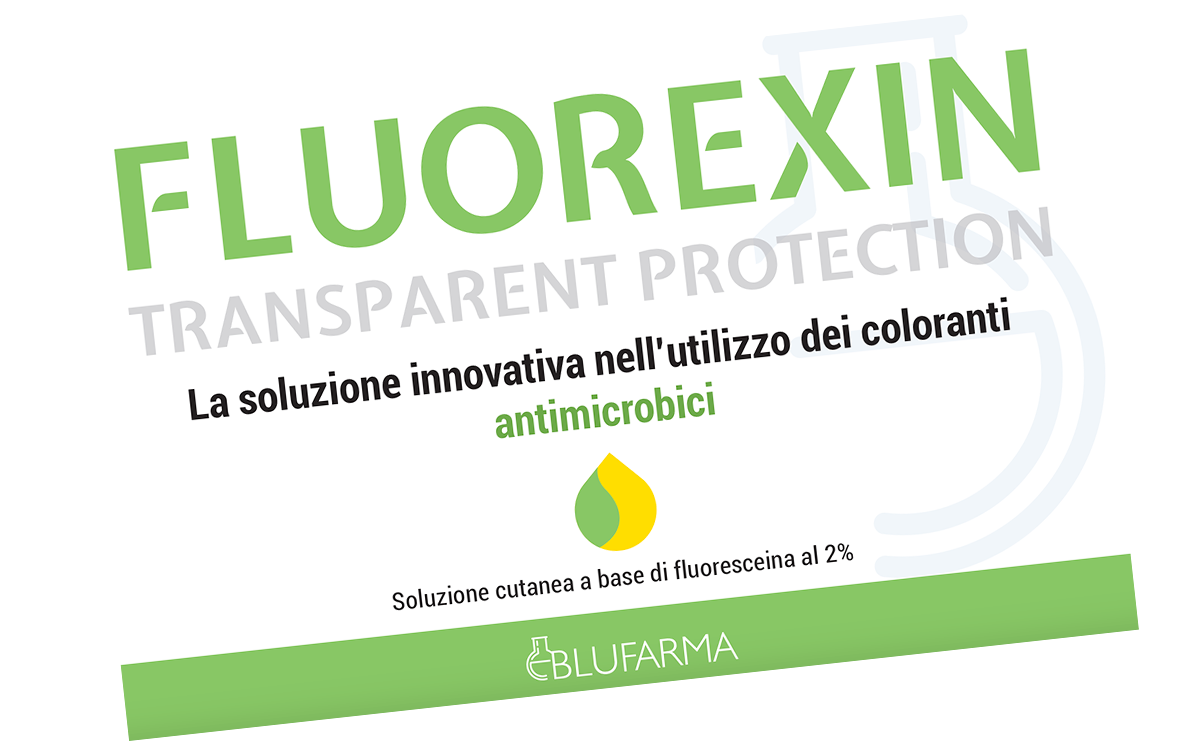

Are you
a doctor?
To receive medical information,
for a question or clarification fill out the form,
we will be happy to help you.

www.blufarma.it
Via Eupoli, 134
00124 Roma
email: info@blufarma.it


 © 2020 BluFarma.- Via Eupoli, 134 - 00124 - Roma - Italia -
© 2020 BluFarma.- Via Eupoli, 134 - 00124 - Roma - Italia - 